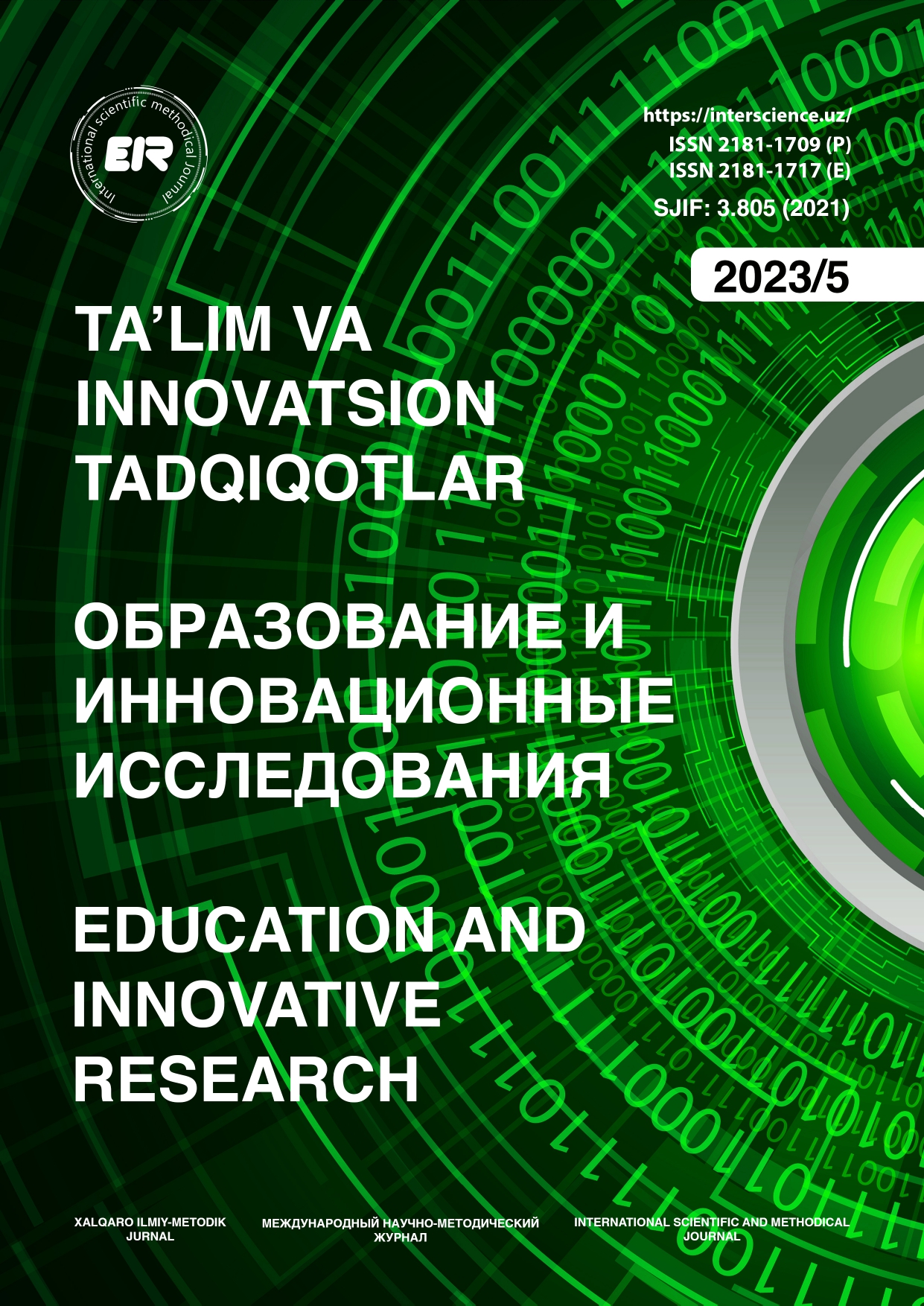EVOLUTIONARY STAGES OF THE FEMALE IMAGE IN ENGLISH AND UZBEK PROSE
Umarova Farangiz Bakhriddin kizi PhD student, Uzbekistan State World Languages University
Keywords:
oʻzbek nasri; ayol harakteri; poetika; ayol va jamiyat; ingliz nasri; timsollar; obrazAbstract
In the current process of globalization, improving the spiritual, political and religious literacy of our people remains the greatest demand of our time. In this regard, the issue of women is of particular importance. This article examines the depiction of the image of women in English and Uzbek prose, and each nation, based on its own views, describes the image of a woman differently in its literature. We know that mainly in Uzbek prose, the image of a woman is depicted as a mother, wife, housewife, while in English literature, in addition to these, it also includes tasks such as a female entrepreneur, a female employee. The image of a woman in English literature has also changed over time. As for the image of a woman in each national literature, it is reflected and perceived in accordance with the nature of that nation and the spirit of the times. Consequently, characters who act the same way in the same circumstances are embodied differently in each literature.
References
Ahrorovna, N. N., & Marjona, M. (2021). Online – conferences platform, pp. 62–68, available at: http://papers.online-conferences.com/index.php/titfl/article/view/589
Baxtin M., Voprosi literature i estetiki (Issue of Literature and Aesthetics), Moscow, 1975, 504 p.
EshmatovaY.B. Istiqlol davri oʻzbek qissachiligida ayol ruhiyatining badiiy talqini (Independence is an Artistic Interpretation of the Female Psyche in Uzbek Short Stories), candidate’s thesis, Tashkent, 2020, 167 p.
Ika M., Aditya P., The 1st International Seminar on Language, Literature and Education, KnE Social Sciences, pages 588–594. DOI 10.18502/kss.v3i9.2722
Karagoda A.P., Sotsiokul’turnaya obuslovennost’ zhenskikh obrazov v isskustvenovogo vremeni (Sociocultural Conditionality of Female Images in the Art of Modern Times): Extended abstract of candidate’s thesis, Krasnodar: 2019, 23 p. 155 p.
Khabibullina L.F., Vestnik Chelyabinskogo gosudarstvennogo pedagogicheskogo universiteta 11-1, 2009, pp. 292–299.
Kodirova G., International Journal on Orange Technologies, Volume 03, Issue 06, June 2021, pp. 97–99, available at: // www.journalsresearchparks.org/index.php/IJOT
Konrad N. I., Zapad i Vostok (West and East. Articles), Moscow, Nauka, 1972, рp. 43–52.
Madanova, M.H. Aktual’nye voprosy literaturnoi komparativistiki (Actual issues of literary comparative studies), Almaty, 1999, 268 p.
Qobil B., Enayo`l (Enaiul), Tаshkent: Mashhur press, 2018, 352 p.
Ravshanovna H.N., Academia: An international multidisciplinary research journal, 2020, vol. 10, No.12, pp. 644–647.
Raximov M., Eurosian Research Bulletin, Volume 3, 2021, pp. 1-7.
Sattorova G.Y., Scientific work (international scientific journal), 2020, No. 08/57, pp. 29–32 DOI: 10.36719/AEM/2007-2020/57/29-32
Shermurotov T., Mangu onaizor talqini. Yetuklik jozibasi (Mangu Onaizor Interpretation. The Charm of Maturity), Tashkent: Turonzaminziyo, 2017, 144 p.
Shore E., Literaturovedenie na poroge 21 veka (Literary Criticism on the Threshold of the 21st Century), Moscow, 1998, pp. 96-102.
Tanner, T. Jane Austen, Houndmills, Basingstokr, Hampshire and London: Macmillan Press Ltd., 1986, 291 р.
Waldron M., Jane Austen and the fiction of her time. Cambridge: Cambridge University Press 1999, 320 p.
Weinsheimer J., ELH, Vol.39, 1972, No.3, pp. 404-419.





